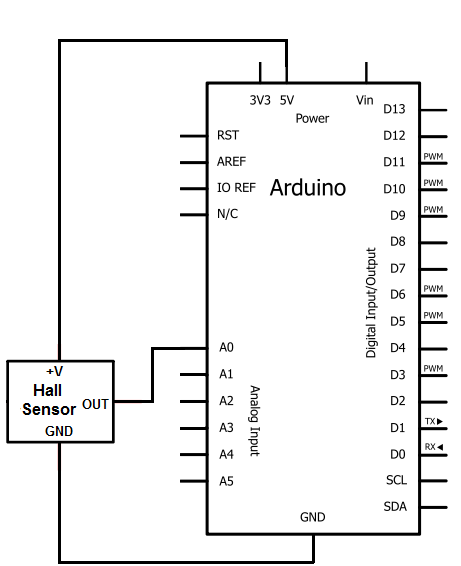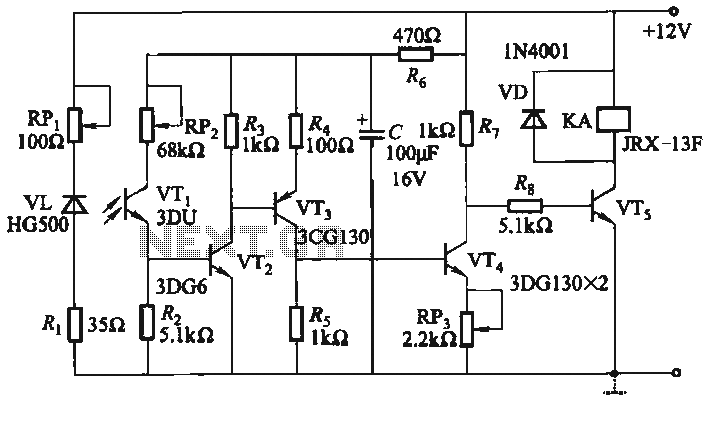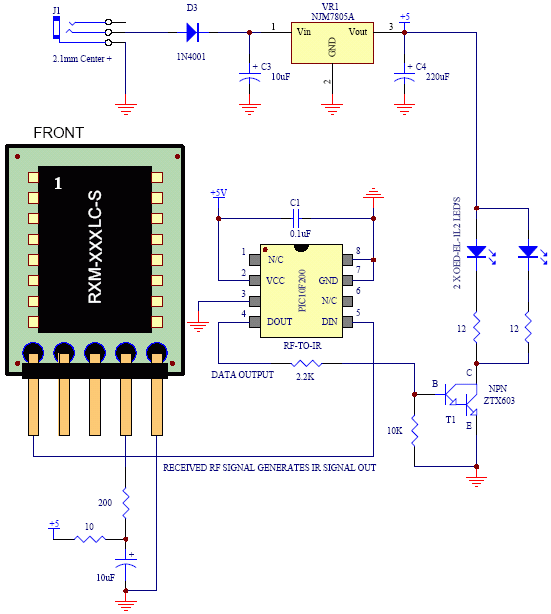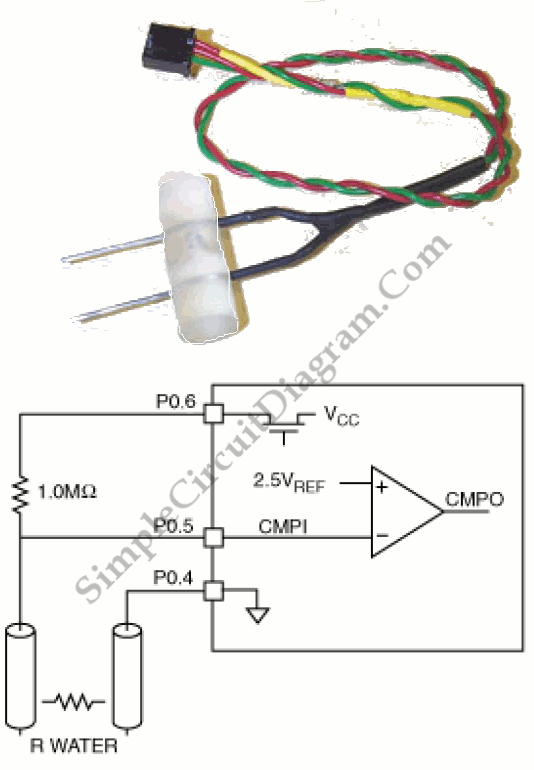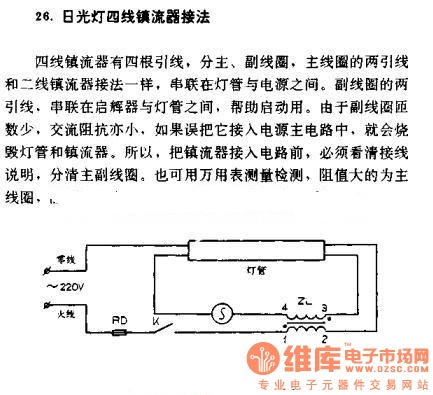
Infrared Repeater System circuit
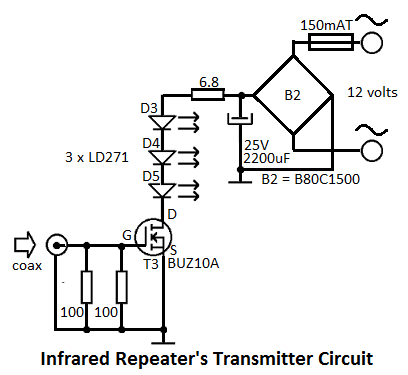
This infrared repeater system is utilized to extend the range of an infrared transmitter used with audio or video equipment up to 10 meters. The original signal is approximately.
The infrared repeater system operates by receiving infrared signals from a remote control or other infrared transmitting devices. Upon receiving the signal, the repeater amplifies and retransmits it, thereby extending the effective range of the original infrared signal beyond its standard limitations. This is particularly beneficial in environments where obstacles or distance can impede the direct line of sight between the transmitter and receiver.
The system typically consists of an infrared receiver module, a signal processing unit, and an infrared emitter. The receiver module captures the incoming infrared signal and converts it into an electrical signal. This signal is then processed to ensure that it is amplified adequately, maintaining the integrity of the original signal. Following amplification, the signal is sent to the infrared emitter, which transmits the signal again in infrared form, allowing it to reach devices situated further away.
Key components of the infrared repeater system may include a microcontroller for signal processing, a power supply unit to provide the necessary voltage and current, and various passive components such as resistors and capacitors to filter and stabilize the signal. Additionally, considerations for the layout of the circuit board, thermal management, and shielding against interference are crucial for optimal performance.
This system is particularly advantageous in home theater setups, conference rooms, and other settings where remote control functionality is required over extended distances. The ability to extend the range of infrared signals enhances user convenience and expands the usability of infrared-controlled devices.This infrared repeater system is used to extend the range of an infrared transmitter used at an audio or video equipment at 10 m. The original signal is ca. 🔗 External reference
The infrared repeater system operates by receiving infrared signals from a remote control or other infrared transmitting devices. Upon receiving the signal, the repeater amplifies and retransmits it, thereby extending the effective range of the original infrared signal beyond its standard limitations. This is particularly beneficial in environments where obstacles or distance can impede the direct line of sight between the transmitter and receiver.
The system typically consists of an infrared receiver module, a signal processing unit, and an infrared emitter. The receiver module captures the incoming infrared signal and converts it into an electrical signal. This signal is then processed to ensure that it is amplified adequately, maintaining the integrity of the original signal. Following amplification, the signal is sent to the infrared emitter, which transmits the signal again in infrared form, allowing it to reach devices situated further away.
Key components of the infrared repeater system may include a microcontroller for signal processing, a power supply unit to provide the necessary voltage and current, and various passive components such as resistors and capacitors to filter and stabilize the signal. Additionally, considerations for the layout of the circuit board, thermal management, and shielding against interference are crucial for optimal performance.
This system is particularly advantageous in home theater setups, conference rooms, and other settings where remote control functionality is required over extended distances. The ability to extend the range of infrared signals enhances user convenience and expands the usability of infrared-controlled devices.This infrared repeater system is used to extend the range of an infrared transmitter used at an audio or video equipment at 10 m. The original signal is ca. 🔗 External reference
